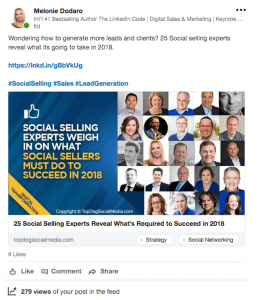In March, after watching the value of Uber decline, I wrote a blog titled “The Gig Economy: Culture Counts” which focused on the role that company culture plays in the long-term definition of the brand and ultimately the brand’s profitability―for better or worse. That article helped to quantify the importance of company culture and demonstrate that culture is driven from the executive ranks and mirrored throughout the organization. This article is somewhat of a postmortem of an aggressive “take no prisoners” culture outshone by the basic business model and vision of one of the world’s most noted start-ups―Uber.
Only three months have passed since the “Culture Counts” blog, and Travis Kalanick, the bad-boy former CEO and culture leader of Uber, has taken his walk of shame into the sunset with the financial community beginning to speculate on the true value of the Company he co-founded in 2009. Now investors, employees, independent contractors, and customers are left with the question: does the business model make sense less the hype and salesmanship of Kalanick. Did the hype fuel the culture?
Eroding Valuations
The value of Uber was estimated at nearly $ 70 billion as of February 2017 from Equidate, an online trading platform for large private technology companies. In April, CNBC estimated that Uber’s value and had dropped to around $ 50 billion in the private secondary market. In May, the Principal Large Cap Growth Fund I, operated by Principal Financial Group, reduced the fair value of Uber stock by “about 5%” according to Fortune Magazine, based on a similar decision by T. Rowe Price.
The devaluations took place before Kalanick resigned and focused on the increasingly seriousness of the Company’s negative publicity―Kalanick berating an Uber driver, sexual discrimination allegations, software that was developed to obstruct law enforcement, and charges of stealing Google’s self-driving car technology―all proof points to a “win at all costs” culture. It was that drive for “world domination” that investors bet on. And the formula looked solid―a technology play coupled by employing gig economy workers to disrupt an industry. Yet, how the Company would succeed―a global taxi quasi-monopoly―remained dubious. The aggressive strategies might be good for short-term substantial market gain, but could those strategies maintain long-term revenue growth and sustain the Company?
A Complicit Press
The taxi industry and its various forms of transportation have been around for centuries. Not much has changed other than the types of transportation hailed. Uber disrupted the industry―and mesmerized the public―creating the perception of a better service at lower cost. The proposition also captivated the media, which covered the Company with less focus on the actual business model (and substantial and sustained losses), possibly assuming that the technology play would lead to robust profits in a short time. There was a lack of financially skeptical articles or challenges to the business model.
Hubert Horan summarizes it best:
“Journalists depict Uber’s unstoppable march to industry dominance as established truth, although the basis for their certainty about Uber’s overwhelming is never explained. Competitors like Lyft (with over $ 2 billion in funding) are treated as minor inconveniences, and every company that had served the industry prior to 2010 is treated as completely irrelevant. Even those who have been highly critical of specific Uber practices (false advertising, driver exploitation, journalist harassment, refusal to obey insurance and safety laws) typically assume that Uber’s story is true. Worse, they take the view that the costs and/or business model changes needed to fix these problems are not significant, and that Uber would retain its yet-to-be-demonstrated efficiency advantages.”
Most media have only recently begun to dive into the Uber business model as the issue of employee retention and stock options have become part of the story. Those stock options and buyback programs have become less lucrative for employees, leaving many employees with hard choices when contemplating their future at Uber. In reporting on the employee choices and on how the Company got to its current financial state, reporters are retracing some of the financial steps of the Company.
Culture after Kalanick
Uber’s culture complimented the CEO and Co-founder’s vision, mission, and business objective; it drove market share and contributed to the personalities that are (or were) successful at the Company. How Uber moves forward from a business model, profitability, and cultural perspective will determine its sustainability and long-term impact on how consumers hire vehicles for specific transportation needs.
Yet, generally, the impact of Uber’s culture is a lesson that businesses need to learn, employ, and communicate. Leadership is key and the company can leverage positive leadership or “bad actors” will exploit it. Your employees, independent contractors (where appropriate), and customers are your best advocates; they can make or break your reputation.
And, culture counts―n this technologically advancing world, a company’s beliefs and behaviors are easily amplified. If a company lives its culture, it’s reflected in the way it does business as well as over the numerous communication channels now available. How a company chooses to shape its culture will have long-term repercussions; whether that contributes or contracts revenue is up to its leadership.
Business & Finance Articles on Business 2 Community(75)
Report Post




